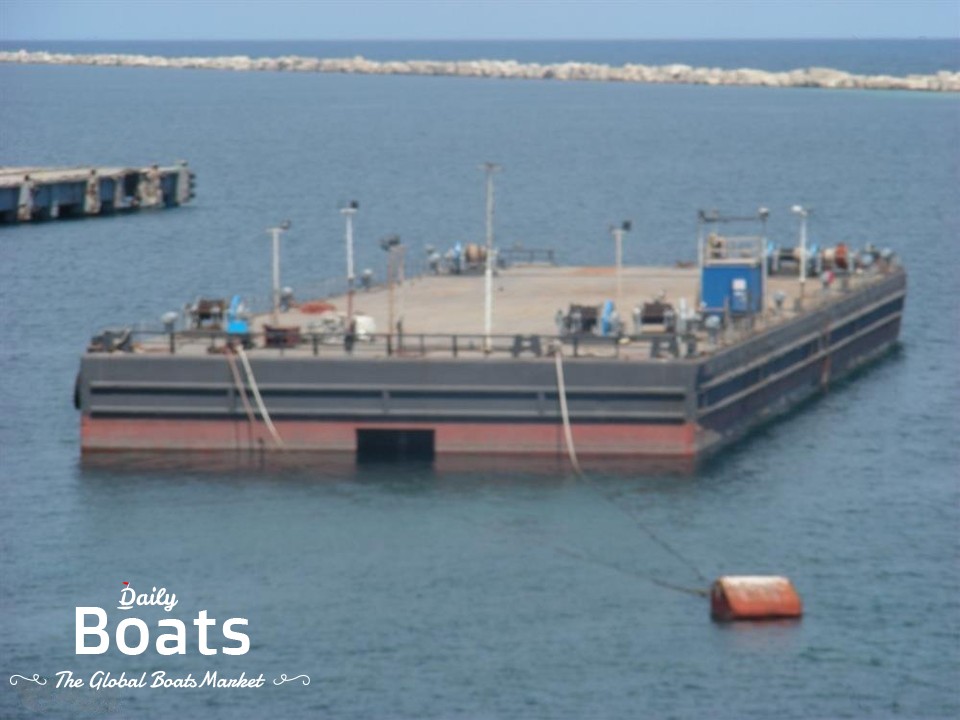Deck barges

What are deck barges?
Introduction
A deck barge is a flat-bottomed vessel with no superstructure, used for carrying cargo. Deck barges are typically built of steel or aluminum and range in size from 30 to 500 feet long and 10 to 35 feet wide.
There are three types of deck barges: open, covered, and tanker. Open deck barges are used to carry dry bulk commodities such as grain, coal, and gravel. Covered deck barges are used to carry commodities that require protection from the elements, such as chemicals and petroleum products. Tanker deck barges are used to transport liquids, such as crude oil and molasses.
Deck barges are used extensively in the construction industry for transporting materials and equipment to worksites. They are also used for dredging operations, environmental remediation projects, and disaster response efforts.
The history of deck barges dates back to the early 19th century when they were first used in the United States for transporting goods on canals and rivers. Early deck barges were often wooden vessels with limited capacity. Modern deck barges are much larger and more versatile, capable of carrying up to millions of gallons of liquid cargo.
Deck barges are constructed by welding together steel plates or by riveting aluminum sheets onto a steel frame. The hull is then outfitted with masts, hatches, winches, cranes, and other necessary equipment.
What are deck barges
Definition of a deck barge
A deck barge is a flat-bottomed vessel with no superstructure, used for carrying cargo. The term "deck barge" is most often used in reference to barges that are used to transport dry bulk commodities, such as grain, coal, and aggregates. Deck barges can also be used to carry containers, vehicles, and other types of cargo.
Types of deck barges
There are two main types of deck barges: open deck barges and covered deck barges. Open deck barges have an open top and are typically used to transport dry bulk commodities that do not need to be protected from the elements. Covered deck barges have a closed top and are used to transport cargo that needs to be protected from the elements, such as containers or vehicles.
Uses of deck barges
Deck barges are most commonly used to transport cargo on waterways. They can also be used to transport cargo on land, using either a crane or a ramp. Deck barges can also be used as floating platforms for construction projects or for events such as concerts or festivals.

The history of deck barges
Early deck barges
The first deck barges were built in the early 1800s. These early barges were used to transport goods and materials on rivers and canals. The deck barge was a simple flat-bottomed vessel with no keel or hull, and was propelled by either oars or poles.
In 1848, the first steam-powered deck barge was built in England. This barge was used to transport coal on the River Thames. The steam engine allowed the barge to be pushed along by a tugboat, which made it much faster and easier to move than earlier barges that had to be towed by horses.
During the American Civil War, deck barges were used to transport troops and supplies between battlefields. After the war, many of these barges were sold off and put into use for commercial transportation of goods on rivers and lakes.
Modern deck barges
Today, deck barges are still used for transporting goods and materials on waterways. However, they have been updated and improved over time. Most modern deck barges have a steel hull instead of a flat bottom, which makes them more stable in rough water conditions. They also usually have a crane or other type of lifting equipment on board, which is used for loading and unloading cargo.
How are deck barges built
The construction process
Deck barges are built in a variety of ways, depending on the intended use of the barge. For example, some deck barges are built with solid hulls to provide more stability and support for cargo, while others are built with pontoon-style hulls that offer more flexibility and maneuverability.
The construction process for a deck barge typically begins with the creation of a strong hull. The hull is then outfitted with decks, bulkheads, hatches, and other necessary features. Finally, the deck barge is painted and launched.
Materials used in construction
The materials used in the construction of a deck barge vary depending on the type of barge being built. For example, solid-hulled barges are typically made from steel or concrete, while pontoon-style barges can be made from aluminum or fiberglass.
Conclusion
A deck barge is a flat-bottomed vessel that is used to transport cargo or passengers on rivers and canals. Deck barges come in various sizes and shapes, and their uses vary depending on the type of barge.
The history of deck barges dates back to early river transportation when people would use rafts to float downriver. Modern deck barges are much larger and more sophisticated, but they still serve the same purpose: to provide a safe and reliable means of transportation.
Deck barges are built by welding together steel plates. The construction process is relatively simple, but it requires precision and skilled labor. The materials used in construction are also important, as they must be able to withstand the elements and the wear and tear of transporting cargo.
The bottom line is that deck barges are an essential part of river transportation. They are safe, reliable, and versatile vessels that can be used for a variety of purposes. If you need to transport cargo or passengers on a river, a deck barge is the perfect solution.







